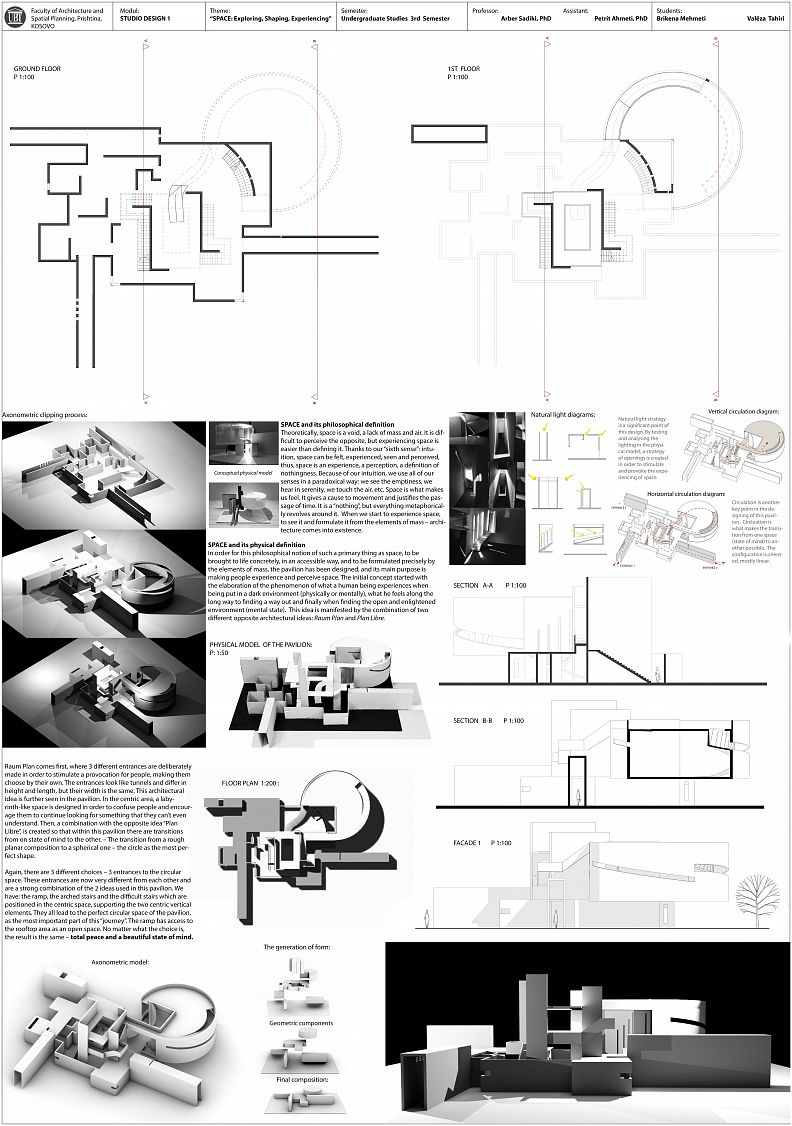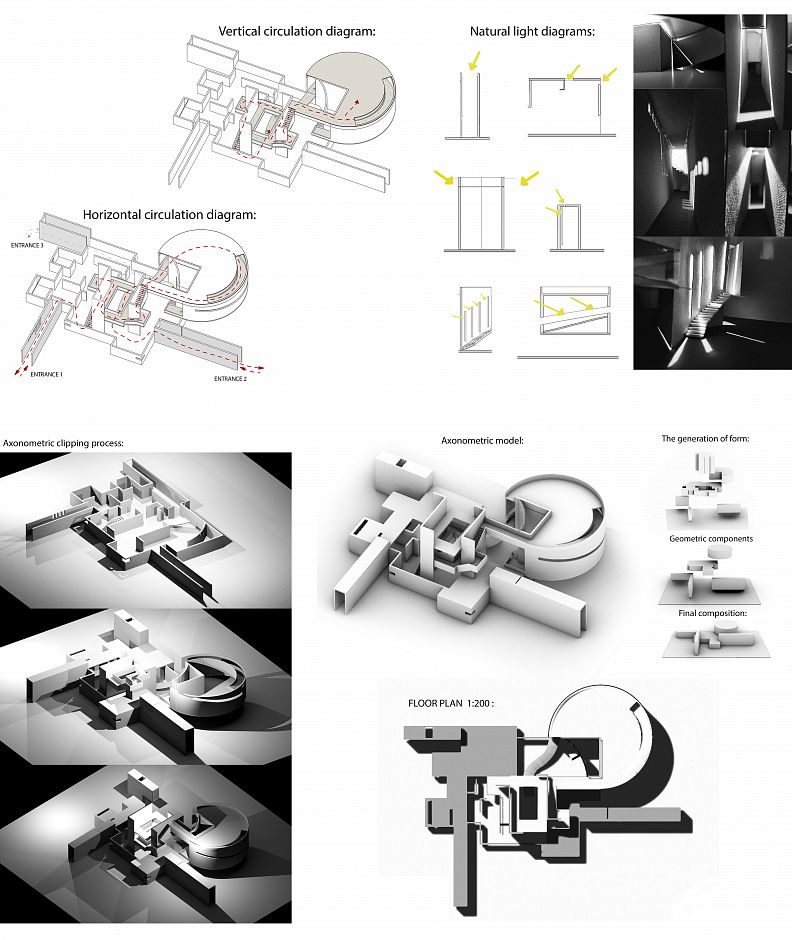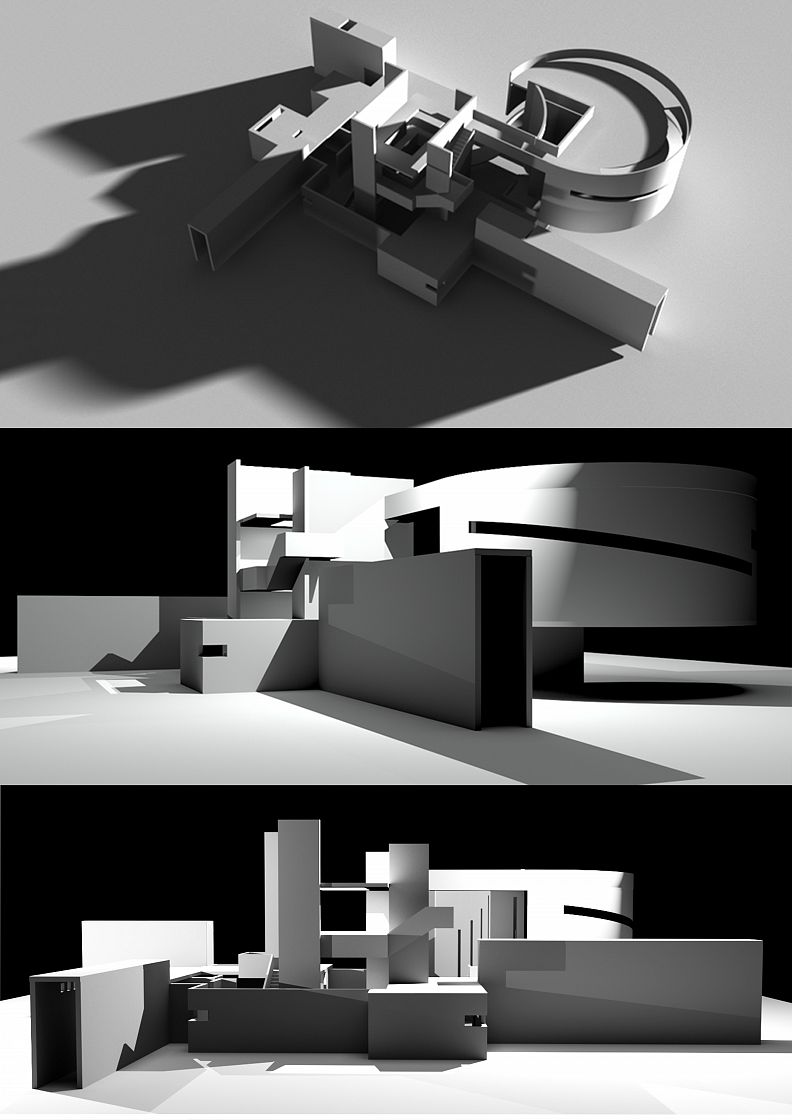SPACE PAVILION - Exploring, Shaping, Experiencing

Project idea
SPACE AND ITS PHILOSOPHICAL DEFINITION
Theoretically, space is a void, a lack of mass and air. It is difficult to perceive the opposite, but experiencing space is easier than defining it. Thanks to our “sixth sense”: intuition, space can be felt, experienced, seen and perceived, and such, space is an experience, a perception, a definition of nothingness. Because of our intuition, we use all of our senses in a paradoxical way: we see the emptiness, we hear in serenity, we touch the air, etc. Space is what makes us feel. It gives a cause to movement and justifies the passage of time. It is a “nothing”, but everything metaphorically revolves around it. When we start to experience space, to see it and formulate it from the elements of mass – architecture comes into existence.
SPACE AND ITS PHYSICAL DEFINITION
In order for this philosophical notion of such a primary thing as space, to be brought to life concretely, in an accessible way, and formulated precisely by the elements of mass, the pavilion has been designed, and its main purpose is making people experience and perceive space. The initial concept started with the elaboration of the phenomenon of what a human being experiences when being put in a dark environment (physically or mentally), what he feels along the long way to finding a way out and finally when finding the open and enlightened environment (mental state). This idea is manifested by the combination of two different opposite architectural ideas: Raum Plan and Plan Libre
Project description
Raum Plan comes first in the pavilion, where 3 different entrances are deliberately made in order to stimulate a provocation for people, making them choose by their own. The entrances look like tunnels and differ in height and length, but their width is the same. These represent the first Raum Plan elements of our pavilion. This architectural idea is further seen in the pavilion. In the centric area, a labyrinth-like space is designed in order to confuse people and also encourage them to continue looking for something that they can’t even understand. Then, a combination with the opposite idea “Plan Libre”, is created so that within this pavilion there are transitions from one state of mind to the other. – The transition from a rough planar composition to a spherical composition – the circle as the most perfect shape that stimulates calmness and peace. Again, there are 3 different choices – 3 entrances to the circular space. These entrances are now very different from each other and are a strong combination of the 2 ideas used in this pavilion. We have: the ramp, the arched stairs and the difficult stairs which are positioned in the centric space, supporting the two centric vertical elements. They all lead to the perfect circular space of the pavilion, as the most important part of this “journey”. The ramp has access to the rooftop area as an open space. No matter what the choice is, the result is the same – total peace and a beautiful state of mind.
Natural light strategy is a significant point of this design. By testing and analyzing the lighting in the physical model, a strategy of openings is created in order to stimulate and provoke the experiencing of space.
Circulation is another key point in the designing of this pavilion. Circulation is what makes the transition from one space (state of mind) to another possible. The configuration is oriented, mostly linear.
Technical information
Concept:
Form Generation Diagrams
Natural Light Diagrams
Circulation Diagrams
Conceptual Model
Technical Drawings:
Ground Floor - P 1:100
1st Floor - P 1:100
Section A-A P 1:100
Section B-B P 1:100
Facades P 1:100
Floor Plan P 1:200
Visualizations:
V-ray Diagramming Renders
V-ray Clipping Process Renders
Physical Models:
Conceptual Physical Model
Physical Model of the Pavilion P 1:50
Co-authors
Students: Valëza Tahiri, Brikena Mehmeti
Professor: Arber Sadiki, PhD







